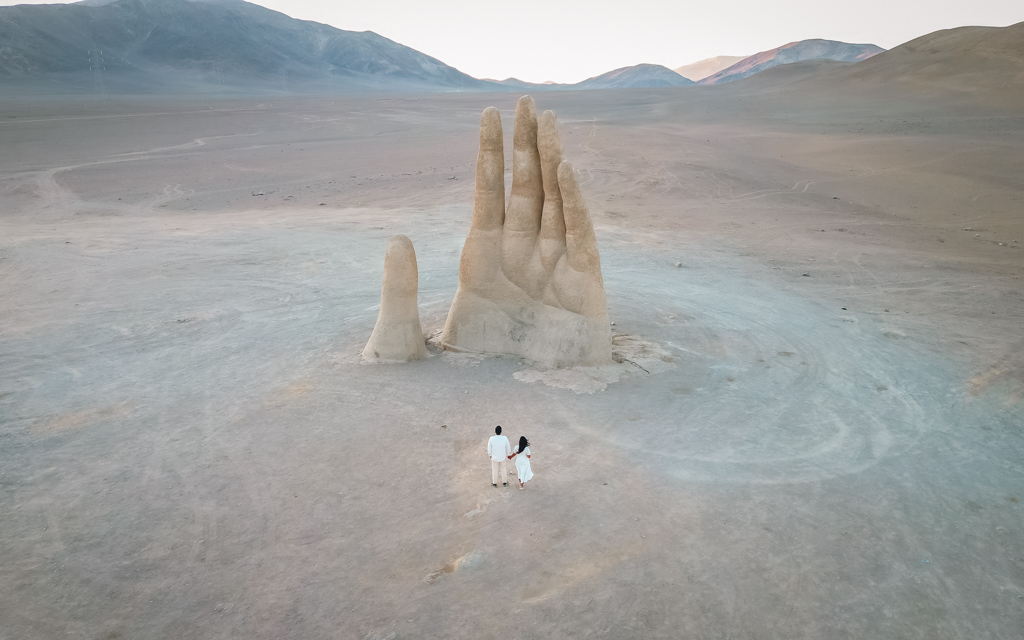Central and South America have incredible bucket-list destinations like Machu Picchu, Uyuni Salt Flat, Patagonia, Iguazu Falls and so many more. But because this region is so far away from our home country, we almost never consider going there for our yearly international trips.
So when we were planning our 6-month world trip, we knew we had to spend a few months backpacking through Latin America, a region in the Americas where Romance languages like Spanish and Portuguese are spoken. The region is absolutely huge, encompassing 33 countries spread through Mexico, Central America, South America and the Caribbean.
Obviously, we could not cover it all in a few months and had to really pick and choose—an excruciating task for someone like me with destination greed. Haha. So instead of seeing it all, this 3-month Latin America itinerary was made in a way that enabled us to have once-in-a-lifetime experiences we wished for while also seeing other noteworthy destinations en route.
And how did it turn out? Absolutely epic!
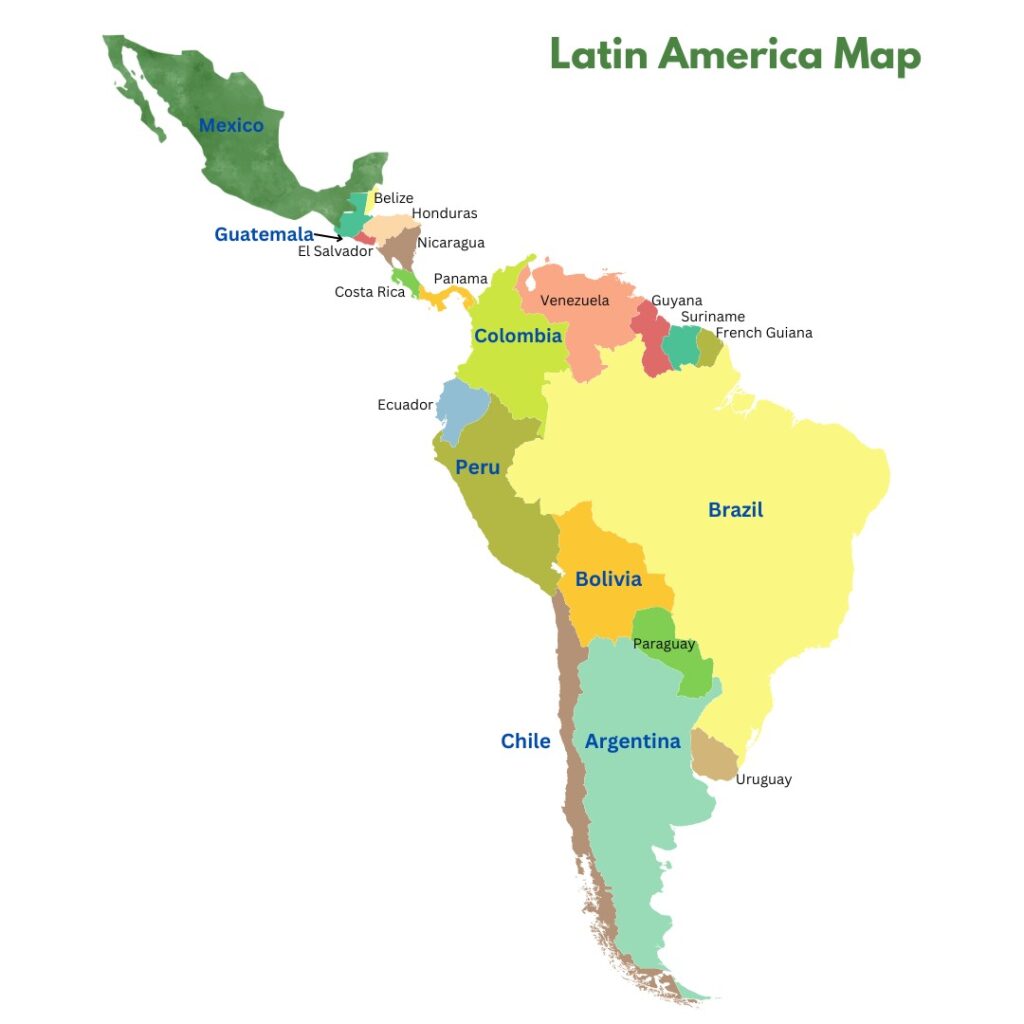
Things we kept in mind while making this Central and South America itinerary
- Pace: This is not a slow-paced itinerary. Since we live far away from Latin America and have limited leaves (PTO), we knew we might not make it back to this region in the next few years. Hence, we wanted to experience as much as possible in the time that we had—about 3 months, 11 days.
So while the itinerary mentioned in the blog post is for 3 months, we actually spent a few days extra in certain cities to slow it down, make flight and tour bookings, get visas, get some rest, etc. These extra days were very important for us to avoid travel burnout, though we did feel the burnout anyway since this was month 3 to 6 of our 6-month world trip through Europe, Morocco, and Latin America.
So when you’re planning your backpacking route, please do add a few days to this itinerary wherever you feel you’d like to spend more time. If you have only 3 months for the trip, skip a country that doesn’t interest you to make time for slow days. I highly suggest spending this extra time in the bigger cities because you’ll get cheaper accommodation. - Visas: We wanted to keep the visas needed as low as possible while still visiting places we really wanted to. If you’re from countries like the USA, UK, European Union, Canada, and Australia, you might not have to worry too much about visas. We’re from India so we had to do a lot of research for each and every country to figure out visa requirements.
For this itinerary, we had to get visas from the embassy for Brazil and Bolivia and an e-visa for Argentina since we have a US visa. For all the other countries on this itinerary, we didn’t need visas at all since we have a US tourist visa. If you’re from a country with a weak passport, you may need a long-term visa from the US to make this work. I have added visa details for each country mentioned in this itinerary to make it easier for you. - Land route: We wanted to minimise flights on this trip while still seeing all the countries on our list. Flights can’t be totally avoided in South America because the continent is huge, but we did travel a lot via buses and crossed land borders too. Buses in South America are quite comfortable and have toilets—they’re the best way to get around on a budget. We booked most of our buses through Busbud. However, if the bus journey for a route was possible but too long or if we heard that it wasn’t safe, then we chose to take a flight instead.
LATAM flights are the most reliable in South America! - Weather: Instead of travelling in one direction from north to south or vice versa like we typically would, we followed a different route starting from Peru in the middle of South America as opposed to Colombia or even Mexico. This was done so that we could avoid the rains and hurricane season in Machu Picchu, Mexico, Guatemala and Colombia in September (when we started this journey) and the winter in Patagonia. We did have a lot of rainy days regardless and couldn’t make it everywhere at the right time, but mostly we got it right!
Remember that the summer and rainy seasons in South America are generally from December to February; the continent is in the Southern Hemisphere, and the winters are from June to August. However, in Colombia and above, towards Central America, the rainy season is between May and November.
We started our trip towards the end of September and ended around New Year’s Eve, taking a route starting in Peru and ending in Mexico. - Cost: This itinerary can be followed whether you’re a backpacker staying in hostels or on a mid-range budget like us, where you prefer to stay in apartments and hotels. We wanted the budget to be as low as possible without compromising on comfort or major experiences. We therefore had to forego places like Antarctica and the Galapagos for this trip (we hope to visit some other day) but we also ensured not to miss out on countries entirely because they’re slightly more expensive, e.g., Chile and Brazil.
We haven’t yet calculated how much we spent on this leg of our trip but we’re sure it was more than we expected because vegetarian eateries aren’t cheap and some experiences were quite costly.
While making your own itinerary, I highly recommend looking at a map of South America so you know where each country is located, noting down the countries you want to visit, the visas needed for each, and the best season of travel to the major points of interest/regions (peak/shoulder). This will help give you more clarity on the route you need to take. I have tried making this task simpler for you below.
Related Read: Packing list for a long-term trip
Itinerary for 3 months in Latin America
In the map given below, we have marked all the places we visited along with the route so you can visualise this itinerary. The start and end points of the itinerary are marked red.
Peru: Day 1 to 18 | 18 days
Bolivia: Day 19 to 24 | 6 days
Chile: Day 25 to 36 | 12 days
Argentina: Day 37 to 48 | 12 days
Brazil: Day 49 to 57 | 9 days
Colombia: Day 58 to 68 |11 days
Guatemala: Day 69 to 76 | 8 days
Mexico: Day 77 to 90 | 14 days
Peru: 18 days
You might’ve heard of Peru because of Machu Picchu and the Rainbow Mountain that are usually all over Instagram. But Peru has so much more to offer than that, from beaches to cities with beautiful architecture to dense jungles to incredible mountains. If you love history, culture, adventure and hiking, you’re going to love Peru.
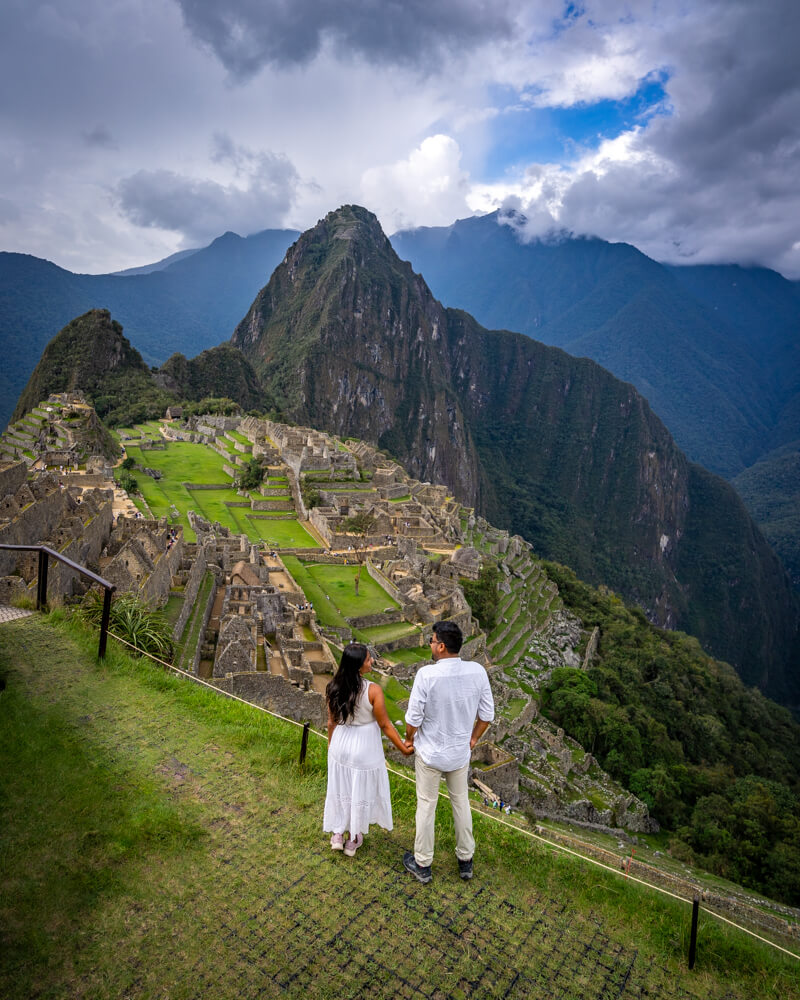
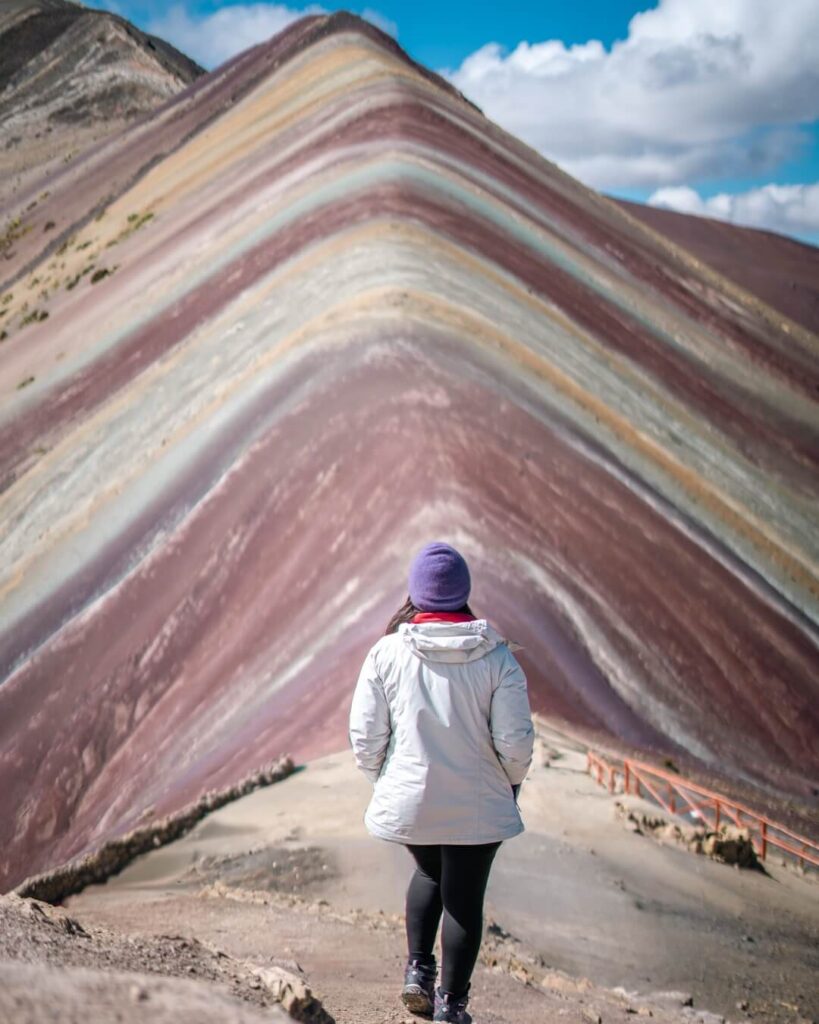
Best time to go: May to October for dry weather
Bucket-list adventures: Admiring one of the 7 wonders of the world (Machu Picchu), seeing the largest rainforest in the world (Amazon), swimming with seals, seeing a natural oasis, and staying on an artificial floating island made of reeds (Lake Titicaca). Peru has way too many unique experiences!
Peru Itinerary:
2 days in Lima: To recover from jetlag, get your bearings in a new continent, and maybe even swim with seals
3 days in Iquitos (Amazon). Instead of Iquitos, you can also go to Puerto Maldonado from Cusco or Lima.
1 day in Huacachina: To see a natural oasis in extensive desert
1 day in Nazca: To see the mysterious Nazca Lines
7 days in Cusco: To visit Machu Picchu, Rainbow mountains and see other incredible Inca sites and villages
3 days in Arequipa: To visit the Colca Canyon and the beautiful monasteries
1 day in Puno on Lake Titicaca: To stay on an island made of reeds
Transport: We only took flights to the Amazon and back. The rest of the time we travelled by local buses, PeruBus and Cruz del Sur, booked on BusBud. Cruz del Sur is a bit expensive but worth it because it is super comfortable and safe as well. If you’re willing to splurge but have the whole bus route sorted out for you, you can also opt for Peru Hop. We ended the journey in the city of Puno, from where we took a bus to our next country on this Latin America itinerary, Bolivia.
Visa: Peru doesn’t require citizens from the countries mentioned here to acquire a separate visa. If your country isn’t mentioned in the list, then find out the visa process for your country here.
As Indians, we were also exempt from having to get a visa since we have a valid US visa. Read the rules for Indians here.
Yellow Fever Vaccination: Recommended but not needed for entry.
Bolivia: 6 days
Our main reason for visiting Bolivia was the famous Uyuni Salt Flat, the largest in the world. We decided to see more places along the way since we were taking buses across the country to get from Peru in the north to Chile in the south. And damn! Bolivia totally surprised us with its incredible raw beauty.
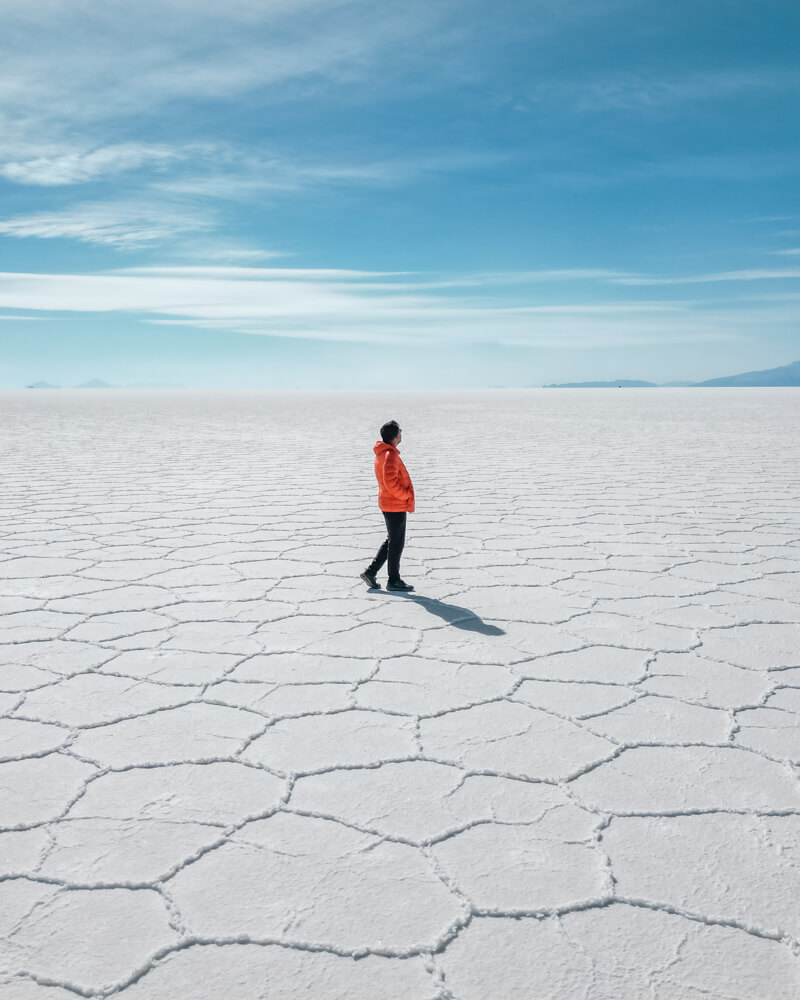
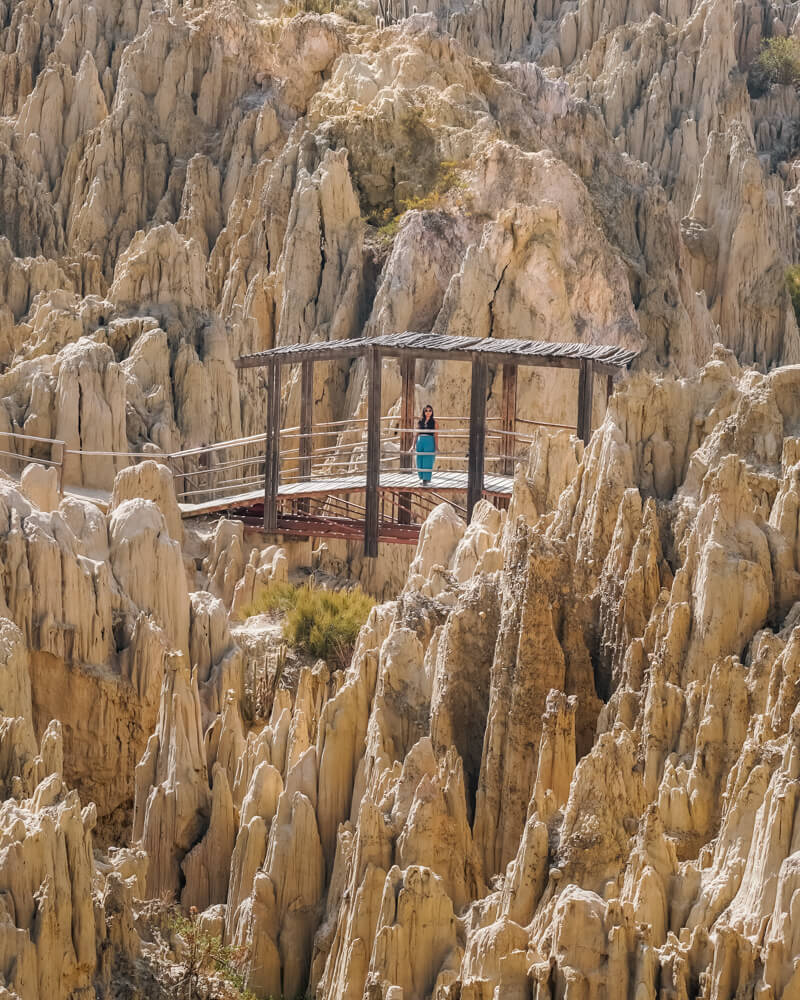
Best time to go: May to October for dry weather. The Uyuni Mirror Effect will happen from December to February.
Bucket-list adventures: Exploring the largest salt-flat in the world (Uyuni) and visiting the highest capital in the world (La Paz)
Bolivia Itinerary
1 day Copacabana on Lake Titicaca: To break up the journey from Puno to La Paz and see some sights
3 days in La Paz: To see the highest city in the world and ride the most extensive cable car network
2 days in Uyuni: Do the 3-day Uyuni tour starting in Uyuni and ending in San Pedro de Atacama, Chile
Transport: We reached Copacabana via a 3.5-hour bus from Puno. Both of these cities are located on Lake Titicaca so we just hopped from the Peruvian side to the Bolivian side of Lake Titicaca, the highest navigable lake in the world. We actually spent two days in Copacabana but thought that the Isla del Sol hike we did on day two was skippable, so I suggest spending only one day here or taking a bus directly to La Paz. La Paz is a very interesting city with much to experience. After seeing La Paz, take an over-night bus to the town of Uyuni.
Uyuni is much more than the salt flats so it’s great to experience it all on a 3-day tour. Think geysers, flamingos, giant cacti, multi-hued lagoons, volcanoes, etc. The tour we did picked us up in Uyuni and dropped us off at the border of Chile, where they’d arranged for another bus to take us to San Pedro de Atacama, a town in the Atacama Desert in Chile.
However, if you’re on a tight budget, you can also choose to do only a one day Uyuni Salt Flats tour because the Uyuni Tour isn’t exactly cheap and Atacama has similar sights.
Visa: All countries are divided into 3 groups. If you’re from Group 1, you do not need a visa. Groups 2 and 3 need visas. Check your country group here.
Note that for India, websites on Google will mention that a visa on arrival is given if you arrive by flight at one of the main airports. However, I could not find this information on any official website. So it is best to get a visa beforehand or call your embassy for clarification.
Yellow Fever Vaccination: Needed before applying for a visa
Chile: 12 days
Chile’s natural beauty is just gorgeous from it’s dry deserts in the north to it’s insane mountains in it’s south. Yes, it is can expensive country but still totally worth a visit!
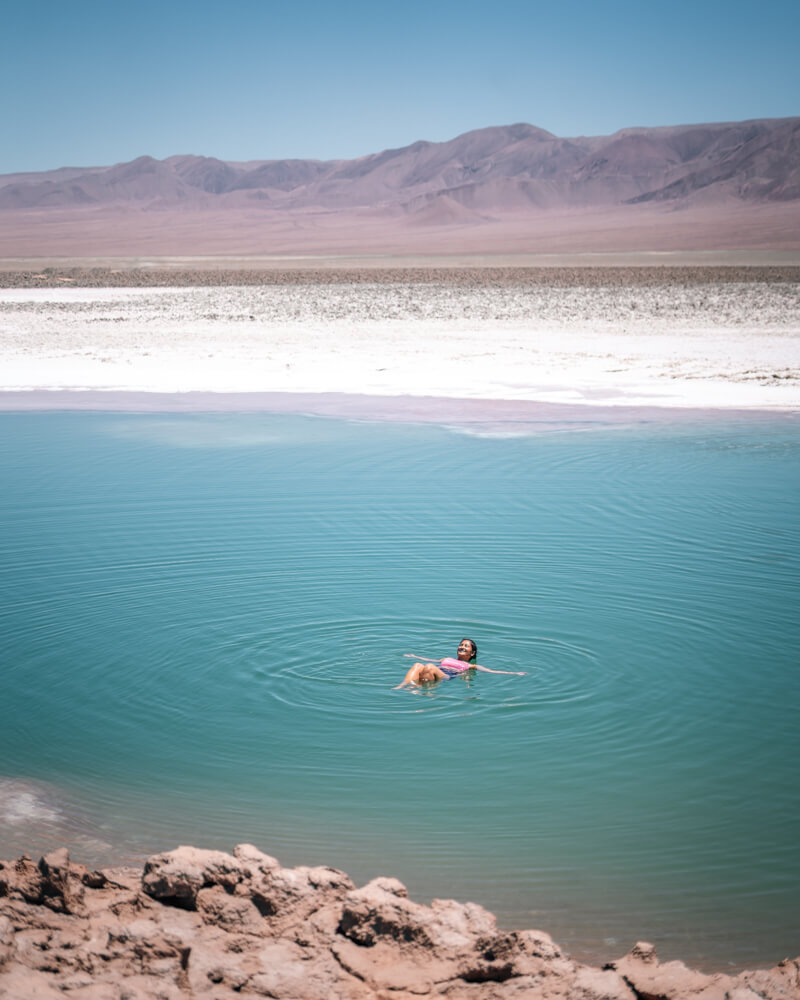
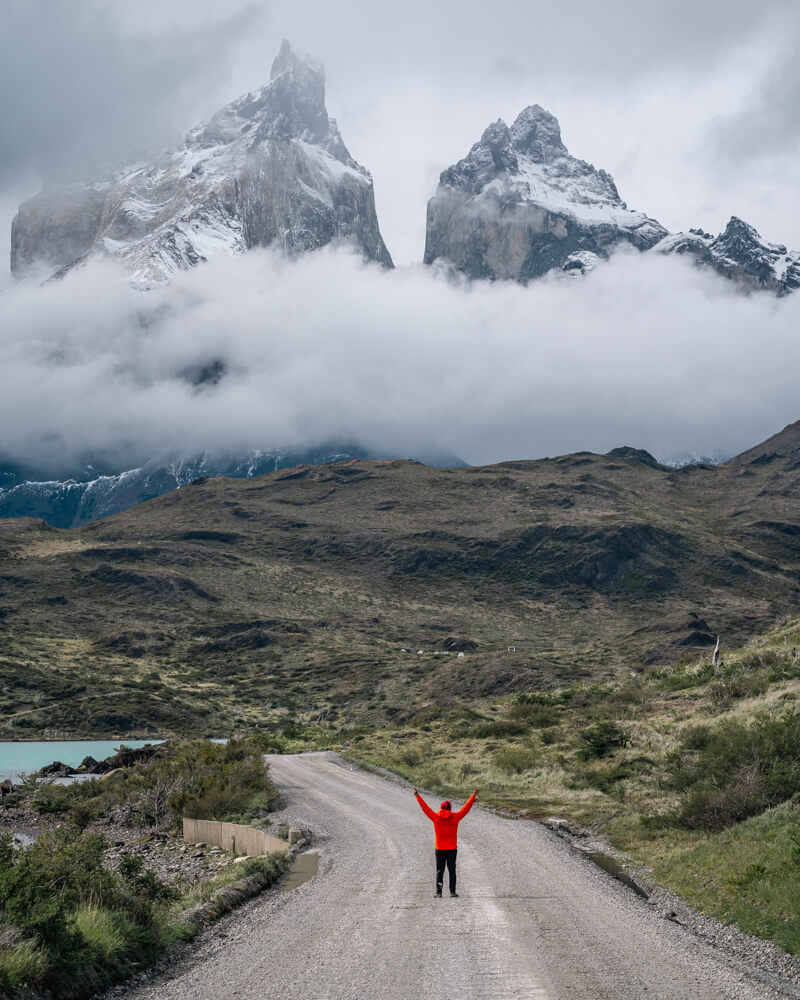
Best time to go: November to March is the summer season so you’ll have the best possible weather in Patagonia (much needed; otherwise, trails can be closed). You can also visit in late October or early April, when the weather is changing but still suitable for a visit.
Bucket-list adventures: Visiting the driest place on Earth (Atacama Desert) and the southernmost region in South America (Patagonia)
Chile Itinerary
3 days San Pedro de Atacama: To see the driest desert in the world and unreal landscapes
1 day in Antofagasta: To visit the Hand of the Desert statue
3 days in Santiago: To rest, rejuvenate, visit some wineries and the colourful town of Valapraiso on a day trip
2 days Punta Arenas: To see a colony of penguins
3 days in Puerto Natales: To take a road trip through the majestic Torres del Paine National Park
Transport: We hired a car to explore San Pedro de Atacama and its environs before heading to another city in Atacama – Antofagasta.
Took a flight from Antofagasta to Santiago, the capital of Chile. The plan was to explore the Maipo wine region and the colourful town of Valapraiso nearby. But we were so tired during our time in Santiago that we didn’t step out anywhere and just did a small winery tour and tasting at the Cosino Macul winery.
We then boarded a flight to Punta Arenas in Chilean Patagonia. I usually sleep on flights but thankfully I didn’t because the views over the mountain were absolutely gorgeous—the most insane flight we’ve ever had. In Punta Arenas, we did a tour to see penguins and then took a bus to Puerto Natales to explore Torres del Paine National Park. This national park is best explored by hiring a car and doing a road trip. But damn! The rental costs can be super high.
Finally, we get on a bus from Puerto Natales in Chile to El Calafate in Argentina.
Visa: Check if you need to apply for a tourist visa here on the Ministry of Foreign Affairs website.
As Indian nationals, we did not need a visa as we had a US tourist visa. Those without a US visa can fill out the application at the above-given link and submit their documents at the embassy in Delhi. Read this guide to understand what you’ll need before you start your application process.
Yellow Fever Vaccination: Not needed
Argentina: 12 days
Argentina has our hearts. It’s sad what’s happening with the economic situation there and high inflation rates. But as a tourist, it was quite inexpensive, very interesting and absolutely stunning!
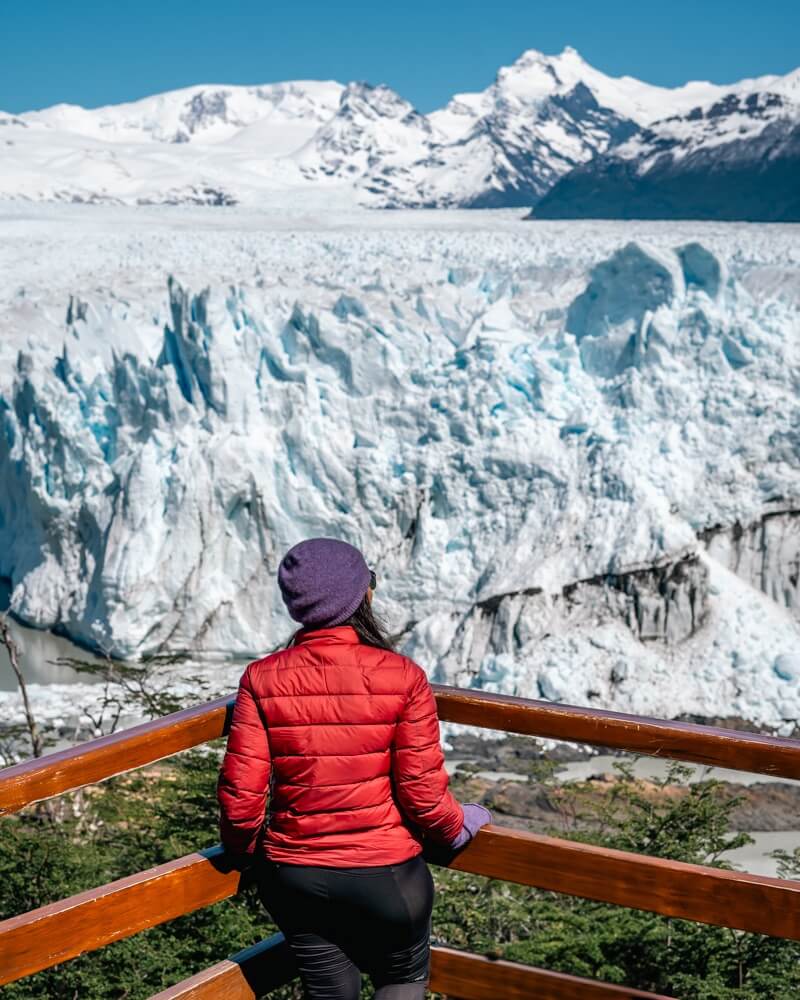
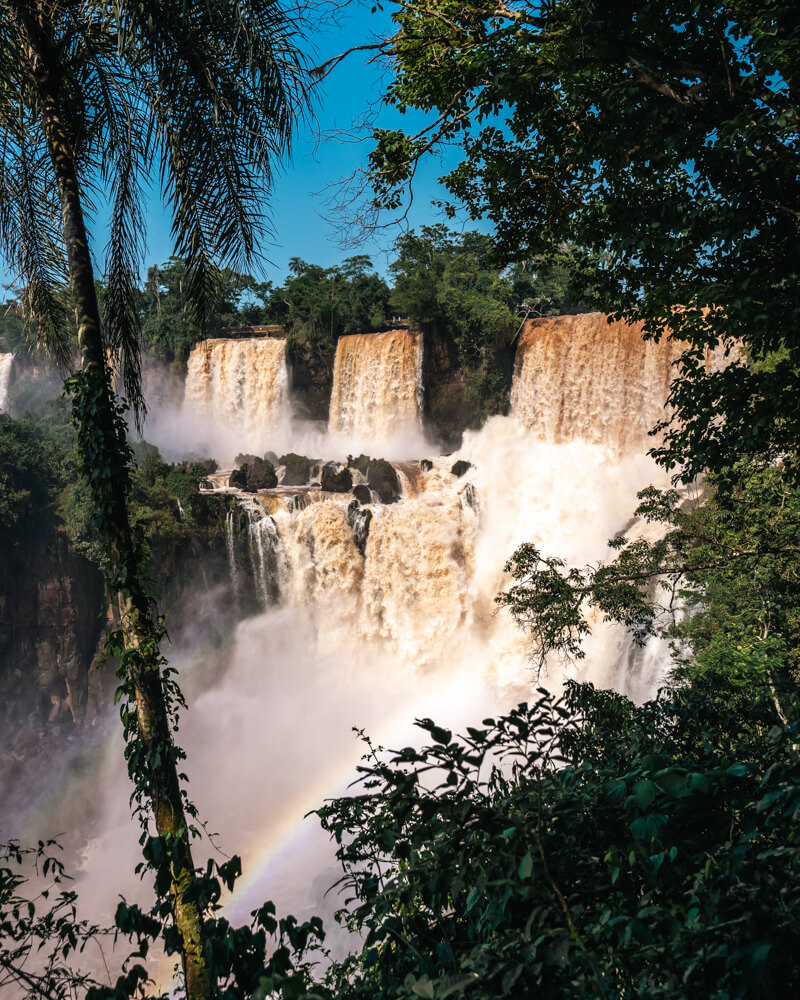
Best time to go: Same as Chile. Late October to early April is summer and shoulder season so you’ll have the best possible weather in Patagonia ( trails can be closed out of season). If you’re going to Ushuaia, then December to February are ideal.
Bucket-list adventures: Seeing magnificent glaciers and mountains in Patagonia, and the largest waterfall system in the world at Iguazu Falls.
Argentina Itinerary
2 days in El Calafate: To see the stunning Perito Moreno Glacier
3 days in El Chalten: To hike to Laguna Fitz Roy for stunning Patagonia views
5 days in Buenos Aires: To rest and rejuvenate, watch Tango shows, eat great food to our hearts content
2 days in Puerto Iguazu: To visit the majestic Iguazu falls.
Transport: In El Calafate, we took a bus to see the Perito Moreno Glacier but this can also be done on a tour, by hiring a car or taxi. You can even do a tour to walk on the glacier itself—a bucket list adventure for sure but we’d already done a glacier walk before in New Zealand so we skipped it. We then took a bus to El Chalten to do some incredible hikes – remember to book the front seat of the bus on the upper deck because the views of Mount Fitz Roy on this route are amazing!
We then took a flight to Buenos Aires, a city we were planning to skip but ended up falling in love with. We spent our time watching tango dances, eating fab food, roaming the streets of colourful La Boca and vibey Palermo, and bar hopping. You can even visit Uruguay on a day trip (only worth it if you don’t need an additional visa).
Finally we boarded a flight to Puerto Iguazu, home to the largest waterfall system in the world, which is located in both Argentina and Brazil. After seeing the Iguazu Falls from the Argentinian side, we took a bus to the Brazilian side—Foz do Iguazu.
Visa: For Argentina, depending on the country you’re from, you may need to apply for a visa at all or may need to apply for an e-visa (AVE global tourist) if you have a US visa or need a visa from an Argentina embassy. You can check the list of countries in each category here. If you’re eligible for AVE, like we were, then you can apply for the e-visa here.
You might want to skip this country incase you need to get a visa because it is damn expensive. However, I’d recommend to not skip it. Instead, spend more days here to make a full use of the visa. Visit Salta, Jujuy, Cayafate, Mendoza, Bariloche and more.
Yellow Fever Vaccination: Not needed for a vaccine when entering the country but it is recommended
Brazil: 9 days
Brazil is such a huge country, you simply can’t see it all and I guess that’s the worst bit. Either way, a visit to Brazil is a must on your Latin America route to see the Brazillian side of Iguazy falls and beautiful city of Rio. We also thought that the locals in Brazil were the most friendly and chill when compared to other South American countries.
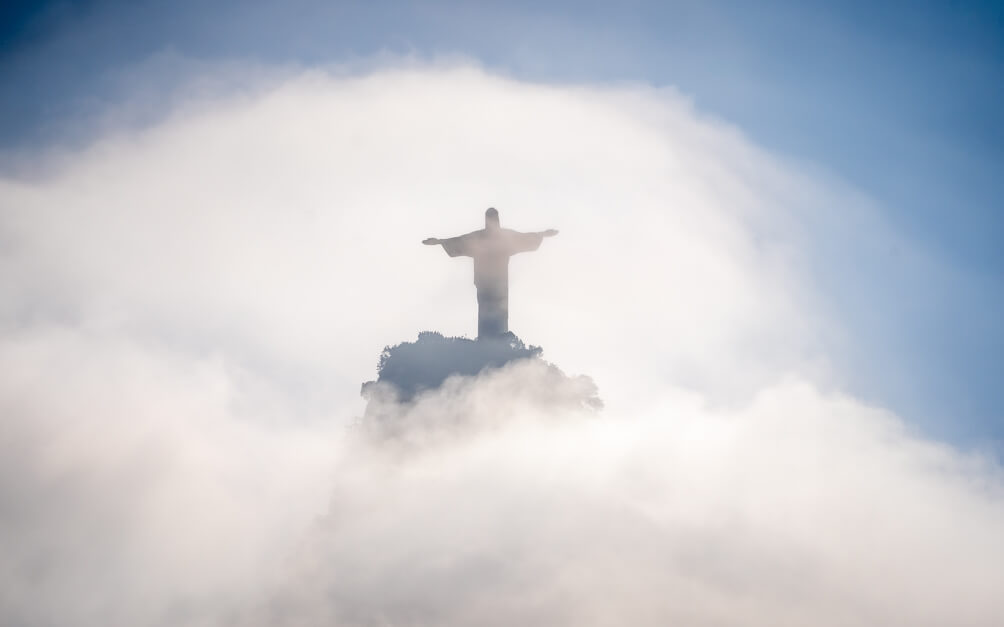
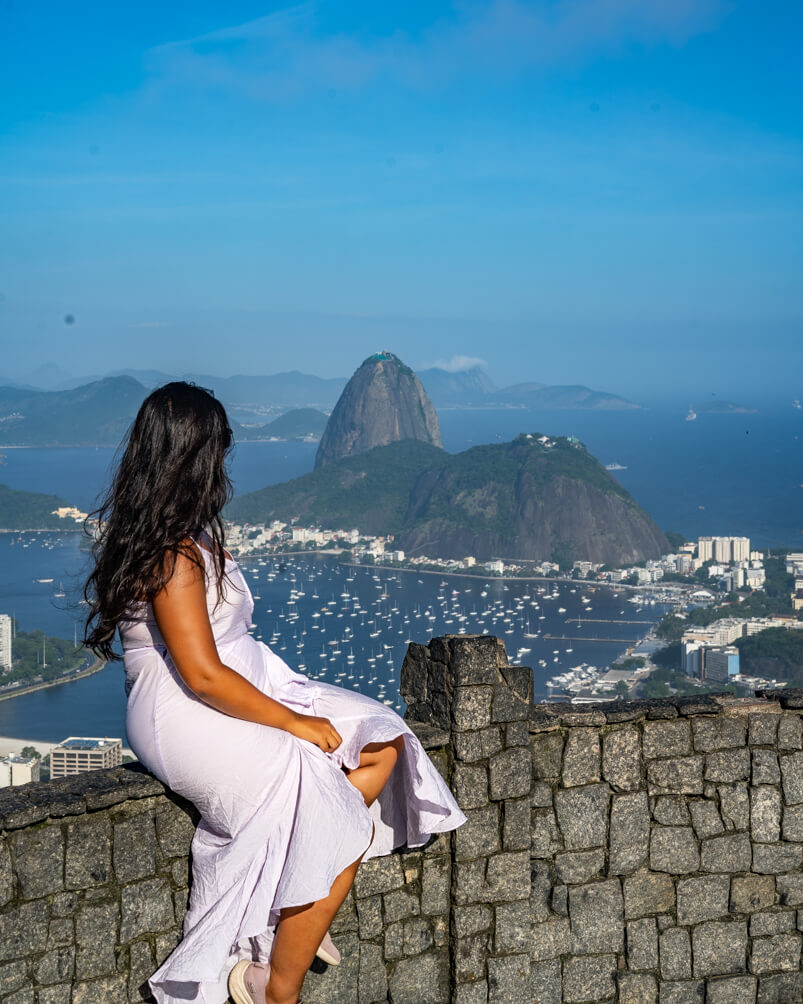
Best time to go: Brazil is huge so the climate varies from region to region. The best time to go depends on where you’re going but typically, you can visit Brazil anytime. The best time for Rio would be February to witness the Carnival and for Lencois Maranhenses it would be May to September when the lagoons are full and the rains have subsided. We went in November and it rained quite a lot in Rio but it wasn’t as hot and humid as it would’ve been between December and March, which is peak season.
Bucket-list adventures: Seeing one of the seven wonders of the world (Christ the Redeemer) and the lagoons between sand dunes in Lencois Maranhenses (we didn’t end up going here)
Brazil Itinerary
1 day in Foz do Iguacu: To see the Brazilian side of the Iguazu Falls and take an insane boat ride under the falls
3 days in either Jericoacora/Lencois Marahenses/Isla Grande/Paraty
5 days in Rio de janeiro: To see one of the wonders of the world and enjoy on the most beautiful cities ever
Transport: The Brazilian side of the falls at Foz do Iguacu is brilliant. This is where we also did a super thrilling boat ride for a dip under the falls. One of our most memorable moments from the trip.
We really wanted to visit Lencois Maranhenses to see the lagoons amidst the sand dunes but were told not to come by some travel agents because it wasn’t the right time to see the phenomenon. We thought that if this didn’t work out, we’d go to Jericoacora, which is a seaside town with no roads and a lot of charm. Unfortunately, the flights to reach these locations were too costly so we decided to go somewhere near Rio itself and ended up in Paraty, a cute seaside town with Portuguese architecture. We’ve heard great things about Isla Grande too so you can choose between either of these locations for your own visit.
Anyway, we took a bus back to Rio de Janeiro, home to one of the seven new wonders of the world, Christ the Redeemer, and one of the 7 natural wonders of the world, Guanabara Bay. It’s a gorgeous city, with stunning beaches, a national park within the city, great nightlife, and amazing views everywhere. Lots of our plans were ruined, though, because of the rain and Taylor Swift’s concert happening during the same time that we were visiting.
After we were done exploring Brazil, we took a flight to Bogota, Colombia’s capital city.
Visa: To know whether you need a Brazil tourist visa or not, check this document’s VIVIS section. If you’re Indian, you need to apply at the embassy. It can get a bit confusing so I’ve documented the entire Brazil Visa application process for Indians.
Yellow Fever Vaccination: Highly recommended
Colombia: 11 days
All I’d ever heard about Colombia was narcotics and how dangerous it was. But no one talks about just how beautiful it really is. It’s cities are very inviting (loved Medellin), there’s colour everywhere, and the nature is breathtaking.
And yes, Colombia has a bad reputation of being a dangerous country and I’m not saying that it isn’t dangerous anymore. It is. That being said, as long as you go to the tourist areas and do not show your valuables in public, you’ll have an amazing time. At no point during our time in Colombia did we really feel that we were in danger.
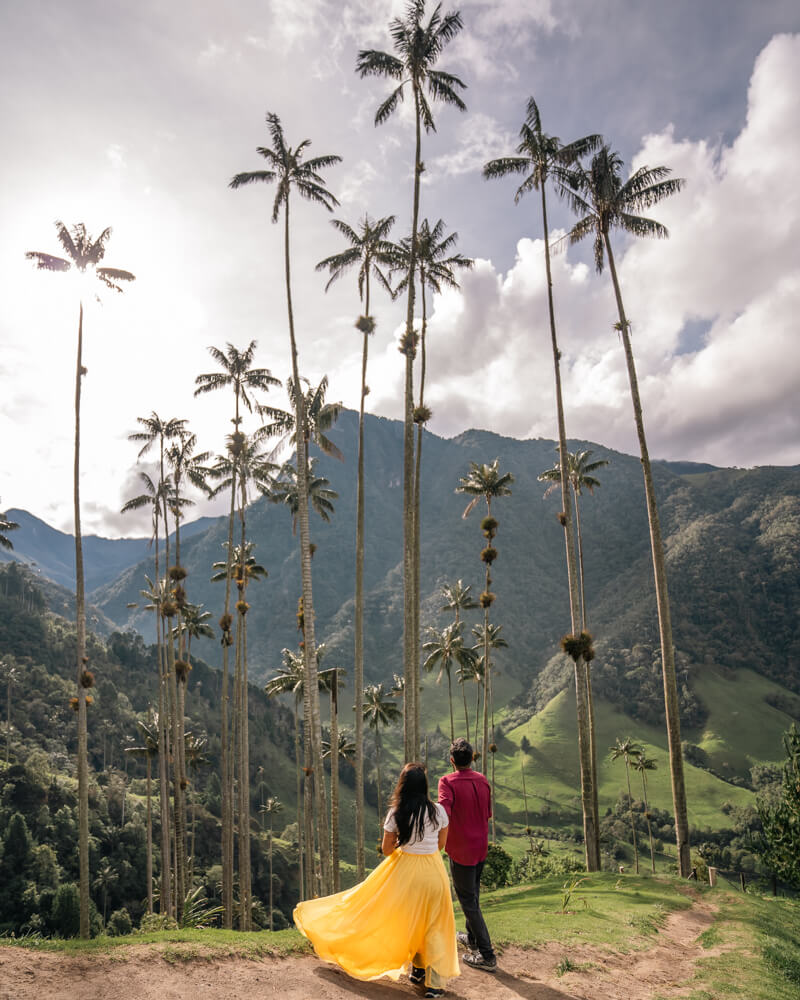
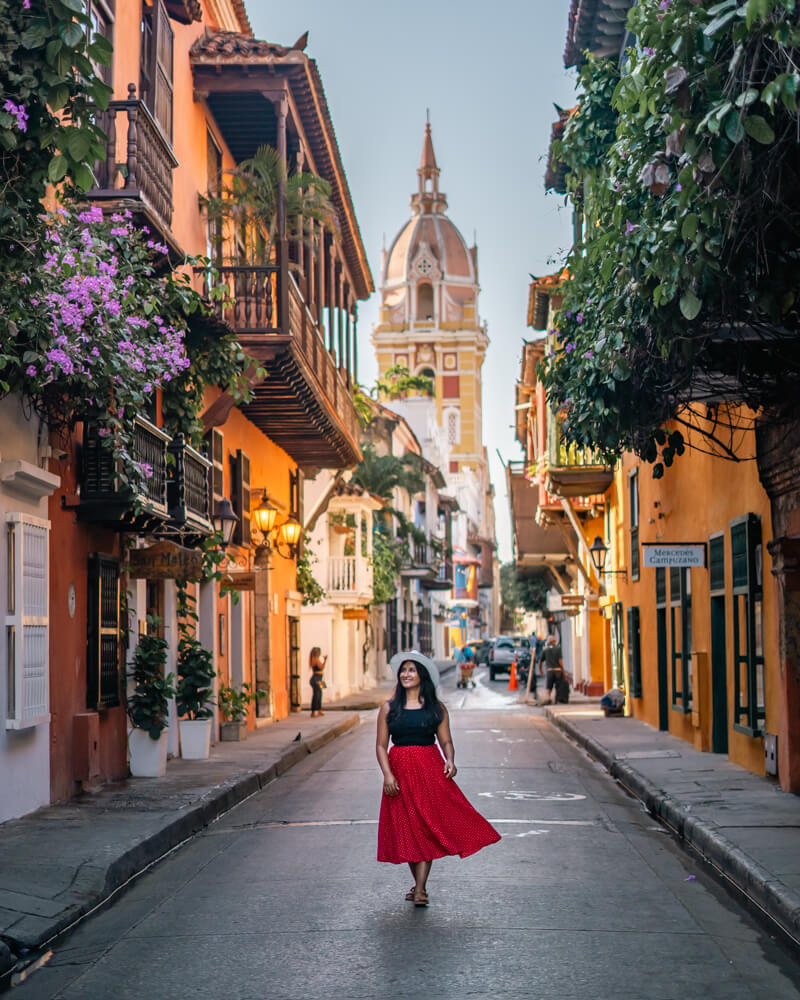
Best time to go: December to March is generally considered a good time to go as it is dry. However, we were there in late November which was also perfect!
Bucket-list adventures: seeing the tallest palm trees in the world (Cocora Valley Salento), experiencing a coffee farm tour in the third largest coffee producing country, and the colourful city of Cartagena.
Colombia Itinerary
2 days in Bogota: To visit the capital of the country and get a deeper understand of it
4 days in Salento: To visit the coffee region of the country and see the tallest palm trees in the world
3 days in Medellin: To enjoy the vibe of one of the most beautiful cities in the world and visit the colourful Gautape
2 days in Cartagena: To visit yet another colourful city and experience the Carribean
Transport: We started our trip in this country by understanding a bit about Bogota and Colombia’s history with a walking tour and seeing some other sights in the city. We actually spent an additional day in Bogota to also visit Zipaquira Cathedral, which sure was fascinating but can be missed to have more time in other cities.
From Bogota, we took a flight to Armenia to go to the colourful town of Filandia where we stayed in a glass cabin with a view of green hills. It was amazing. We then took a colourful jeep to the colourful town of Salento to see the coffee farms and hike the Cocora Valley.
From Salento, we took a morning bus to Medellin. Medellin, once one of the most dangerous cities in the world due to it being Pablo Escobar’s home, has now rebuilt itself in a positive way and talking about Pablo is taboo. It’s a beautiful city with great weather year round, cafe culture, rich history and a superb party scene. It’s hard to not love this city!
From there, we took a flight to Cartagena, where we enjoyed walking in this very aesthetic city and beach time on the islands nearby. But dayum, it was blazing and I’ve heard many people complain about this. So I guess, it’s always blazing and mega humid. Terrible combination.
Finally, we took a flight to Antigua, Guatemala, in Central America.
Visa: There are 102 countries that can enter Colombia visa free, while others need a visa or may enter with a US or Schengen visa (like we did). Read the visa rules and list of countries here. I am unable to find a link to an official website so please check the latest information from the Colombian Embassy website in your country.
Yellow Fever Vaccination: Recommended as you may need it for visiting certain national parks but not for this itinerary.
Guatemala: 8 days
I’m not sure if you’ve ever heard of this country or why it’s a must-visit. We actually booked a trip to this country to see an erupting volcano but it totally surprised us with it’s beautiful towns, ancient sights, lakes and all those might volcanos. We think its so underrated!
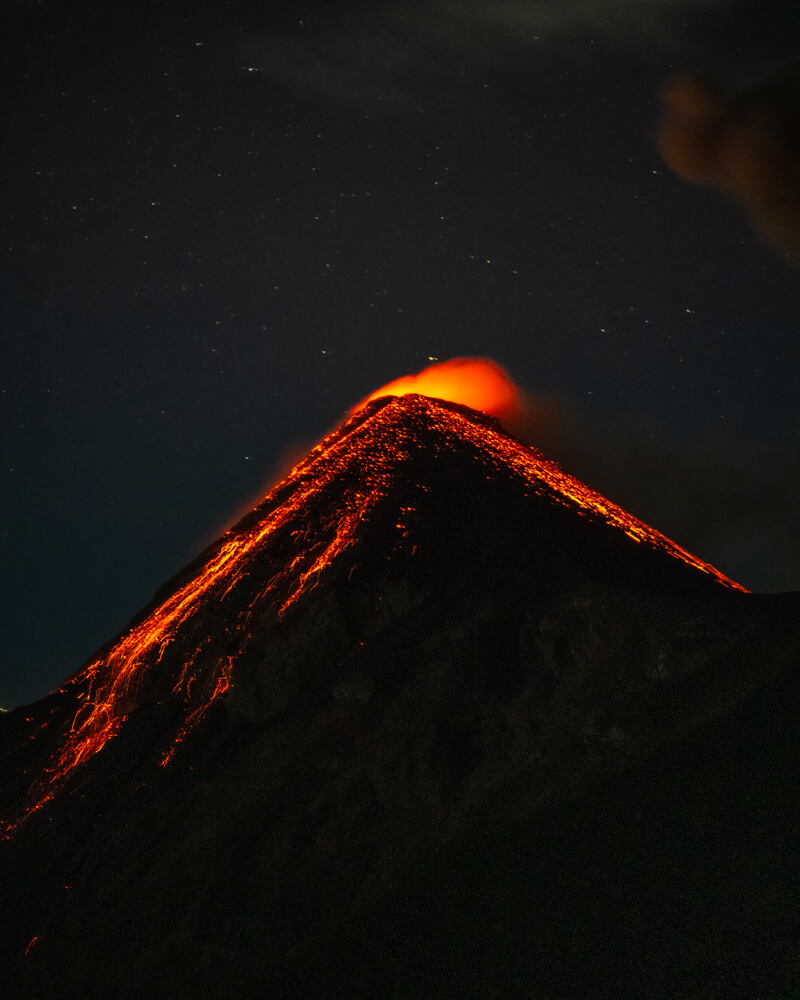
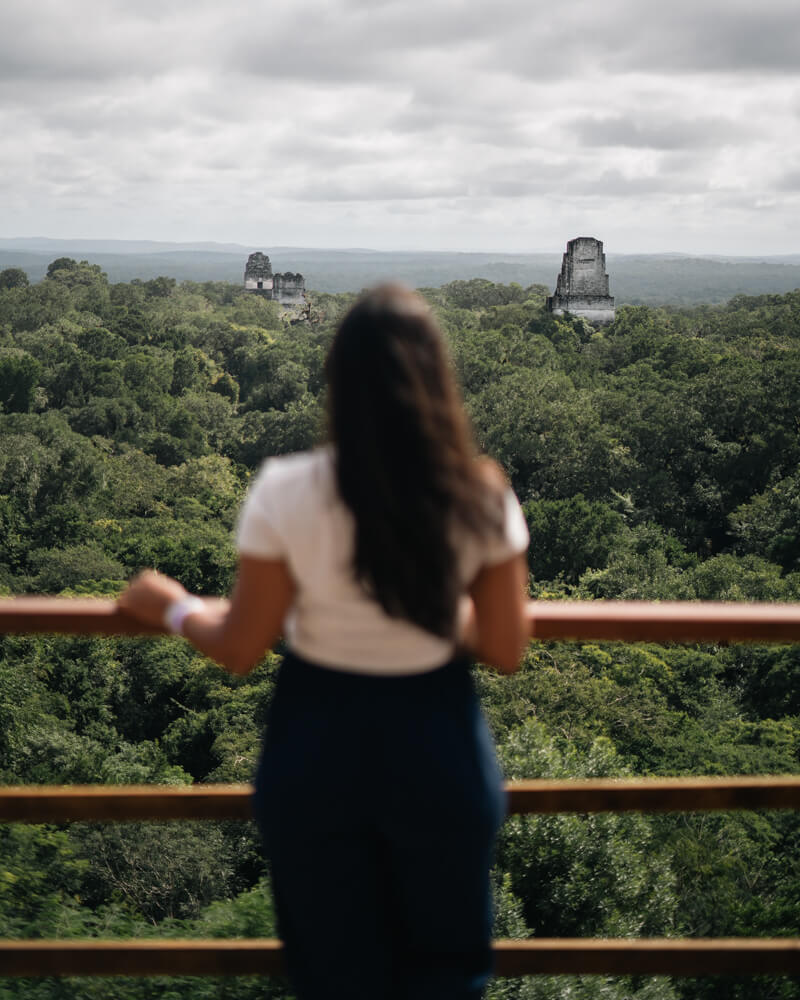
Best time to go: November to April in the dry season
Bucket-list adventures: Seeing seeing an active volcano erupt and the mysterious Mayan pyramids of Tikal.
Guatemala Itinerary
4 days in Antigua: To see an erupting volcano and beautiful Spanish colonial architecture
2 days in Lake Atitlan: To relax in a resort on this lake that has views of 3 volcanoes
2 days in Flores: To see the mysterious ancient city of Tikal
Transport: We reached Guatemala City by flight and took another flight to Flores. The initial idea was to go to Flores last so as to be able to take the land route to Mexico via Belize. But there was some issue with going to Belize carrying a drone, so we chose to skip Belize altogether. We did Flores first and then the other cities in Guatemala.
Flores is home to the ancient Mayan city of Tikal. The pyramids here are way more mysterious and stunning than Chichen Itza, as they’re located in the middle of an overgrown jungle.
After exploring Tikal, we took an overnight bus to Guatemala City and then a shuttle to Lake Atitlan. At Lake Atitlan, we celebrated our anniversary by staying in a beautiful resort by the lake to relax and enjoy the stunning views of Lake Atitlan’s blue waters and volcanoes. We chose not to explore the other villages around the lake but you can definitely do so.
Finally, we took a shuttle to Antigua, again a very charming city that’ll transport you back in time. Next morning, we did the Acatenango hike to see an active volcano erupt every 10–15 minutes. The hike is gruelling but damn, those views are everything. This was an overnight hike so we returned to Antigua only the next afternoon and explored the many sights in Antigua before leaving for Mexico.
Visa: Some countries are visa-exempt, while others are not. You can check the requirement for your country here. Since we had a US visa, we did not need a visa to enter the country.
Yellow Fever Vaccination: Required only if arriving from countries where there is risk of yellow fever virus
Mexico: 14 days
Mexico was high on our bucket list for as long as we can remember, and it really was awesome. We loved strolling in the cute towns, swimming in stunning cenotes, and exploring Mexico city. The food was extra delicious which automatically puts Mexico in our top 10 countries we’ve ever been to!
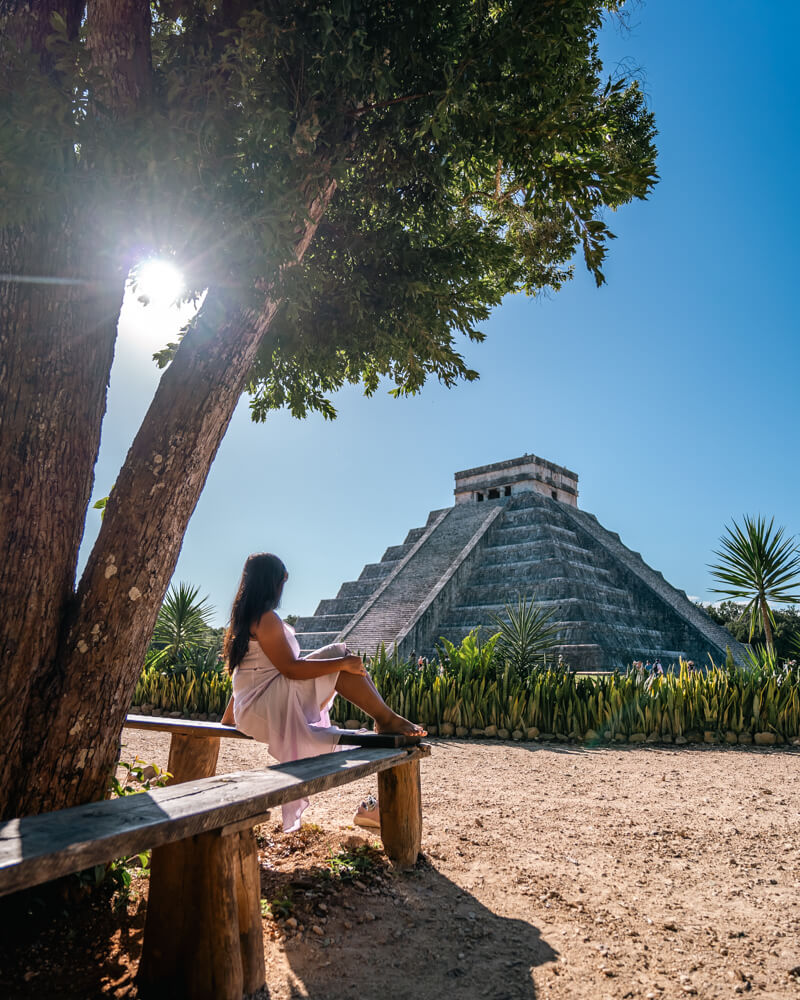
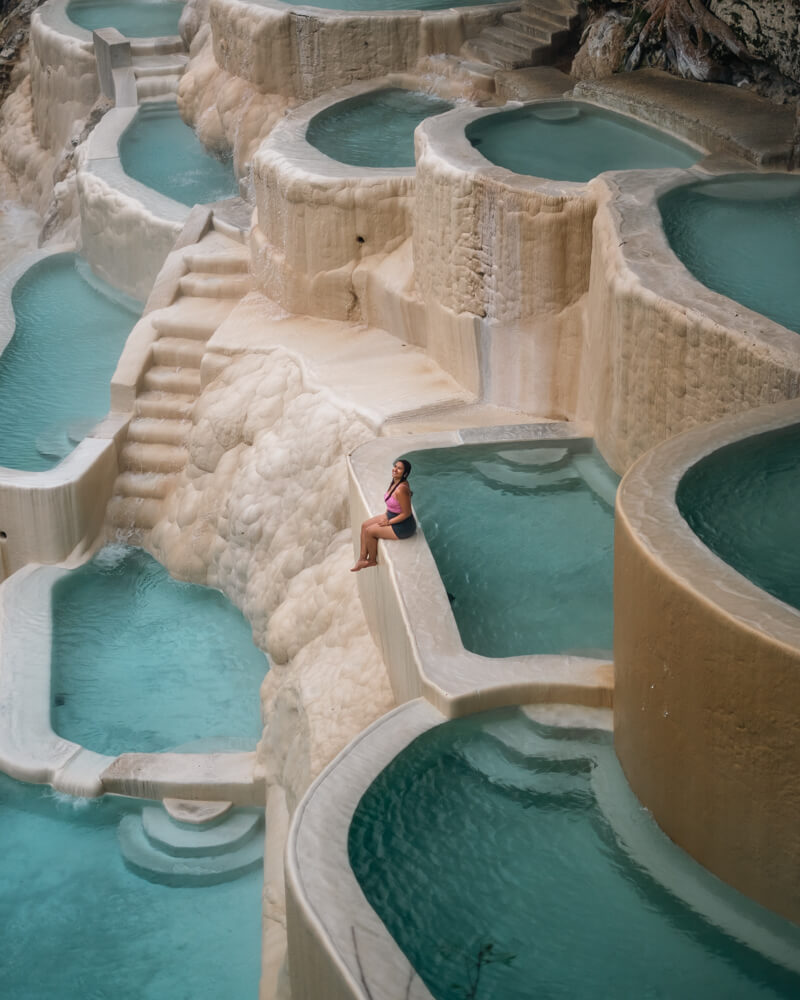
Best time to go: December to April, when the weather is dry and temperatures are cool.
Bucket-list adventures: Visiting one of the seven wonders of the world (Chichen Itza) and experiencing cenotes of Yucatan Peninsula
Mexico Itinerary
3 days in Tulum: To swim in stunning cenotes
3 days in Valladolid: To visit one of the 7 wonders of the world and visit beautiful towns
2 days in Isla Holbox: To live the island life
6 days in Mexico City: To explore one of the most interesting cities ever
Transport: We finally made it to the Yucatan Peninsula—a region we loved so much that we can’t wait to go back. We hired a car and went to Tulum, Valladolid, Izamal, and Isla Holbox to see Mayan ruins, beaches, colourful towns, and cenotes (sinkholes you can take a dip in). If you’d like, you can also visit Bacalar instead of Isla Holbox.
Finally, we took a flight to Mexico City for our final few days of this 3-month Latin America trip. Mexico City is absolutely wonderful with its rich history, amazing museums, and many getaways. We especially loved our visit to the Tolantango hot springs.
Visa: For Mexico, you’ll need to apply for a visa at the embassy if your country is not on the list of countries that are except from holding a visa. You do not need to hold a visa if you have a valid US, UK, Canada, Japan or Schengen multiple entry visa that is valid during the intended period of stay in Mexico. Read all the exemptions here.
Yellow Fever Vaccination: Not needed
Travel tips for your trip to Latin America
Learn Spanish: It is very helpful to learn at least a bit of Spanish since Spanish is spoken in all Latin American countries except Brazil. This’ll enable you to understand quick things like numbers, food items on the menu, etc., which can make or break your trip. Google Translate will be super helpful, but when you don’t have internet access, it can be a challenge to use since the voice translation function doesn’t work.
I started learning Spanish on Duolingo the moment I started to plan this trip and I was super thankful that I did because we could get by with my basic understanding of Spanish words. However, I wish I’d taken proper lessons as well to be able to form full sentences and have longer conversations.
Pack Light: Flights do not have luggage included in the basic fare. So travelling carry-on only will be helpful in avoiding hefty baggage fares. If you do have to carry luggage, carry only one piece under 20 kg. This weight limit exists for buses in South America and they can be quite thorough in weighing your luggage and asking for extra fees for each kg over the limit.
Though our suitcase was 23 kg, we always moved the extra weight to our backpacks, which we carried with us, instead of checking them in, and so it was never checked for weight. For flights too, we moved around the items in our luggage and backpacks in such a way that we always fit all weight and size requirements.
To know what to pack, check out our post on packing for a long-term trip.
Safety: South America is known to be unsafe, with muggings being extremely prevalent, especially in Brazil and Colombia. Negative experiences can easily be avoided, however. The first tip is to not show anything valuable in public. When you’re out walking on the streets, avoid holding it out to take selfies and such. And god forbid, you are mugged and asked for your valuables; do not try and be smart about it. Simply give your stuff to them because these people are often armed and dangerous.
We were extremely careful while travelling in South America and had zero safety issues or muggings, which can’t be said for our time in Europe.
Get reliable travel medical insurance: When you’re on such a long trip, things often go wrong. So when it comes to your health and peace of mind, don’t cut corners and get good travel medical insurance.
SafetyWing’s Nomad Insurance provides coverage in 180+ countries and you can even buy the insurance once you’ve left for your trip (which isn’t the case with most other insurances). If you have any unexpected medical problems or an accident while on your trip, you’ll be able to access a qualified global network of hospitals and doctors, as well as get medical evacuation if need be.
You’re also covered for travel delays, lost checked luggage, personal liability and more, and you can even opt to have yourself covered for adventure sports and electronics theft (a must for Latin America). The best bit is that their claims process is super simple! Find out more about SafetyWing Travel Insurance.
Booking Activities: While we swear by GetYourGuide, we’ve seen that the prices for their activities in certain countries like Peru and Bolivia in South America are often quite high compared to the actual cost. We recommend booking your tours locally with travel agents in the city or booking through the website FindLocalTrips. For the rest, GetYourGuide is great!
SimCard: In South America, we found that physical SIM plans by local companies were usually cheaper than e-SIMs like Airalo and Holafly, but it’s always best to check the latest prices. The two most famous telecom companies in South America are Entel and Claro. Depending on the country you’re visiting, you will probably need to get one of these SIMs. Only get a SIM from their official stores in the city, because then you will be given many offers that regular stores may not know about. And for a country like Brazil, you will have no option but to get an e-SIM because buying a SIM requires a local identification number, which you don’t have.
Flights: When travelling in South America, always try to take a LATAM flight if it’s available for your route, as they’re the most reliable. Avoid companies like SKY, which are absolutely horrid. Always book directly through the airline website, as otherwise they won’t support you when things go wrong and you won’t be able to get a refund. And always expect delays!
Buses: As mentioned, buses are quite comfortable, especially if they’re slightly long-distance ones. You can book them via local agencies, directly from the bus stop or use the app Busbud.
Getting around the city: Use public transport where possible. And where it’s not, depending on the city, you’ll be able to use apps like Uber, InDrive, Didi, and Cabify.
Accommodation: To book accommodation, always check the areas that are safe for your trip by Googling ‘best area to stay in x city’. This’ll ensure you choose an ideal location where tourists generally opt to stay.
We’ve listed down the apartments and hotels we stayed at during our Latin America trip so it may be of help to you.
With that, this travel guide comes to an end! Visiting Central and South America can sound tough and intense, but it actually isn’t if you’re aware of all ‘what could go wrongs’! In fact, writing this post makes me remember the beautiful time we had these 3 months! Every time we look at our photos and videos from the trip, we can’t believe we actually went to places we thought we would only ever visit through scrolling on Instagram or in our dreams. Latin America is so worth the trouble.
If you’re planning such a long trip for yourself, I’d be happy to help in any way so that you can experience this incredible continent too. Drop any questions you have in the comments section below or DM me on Instagram.
This blog post on ‘3-month Latin America Itinerary’ has affiliate links that enable us to earn a small commission when you make a purchase, with no extra cost to you. We only recommend products that we like and those that might interest you. If you like any suggested product, do buy from the given links.

